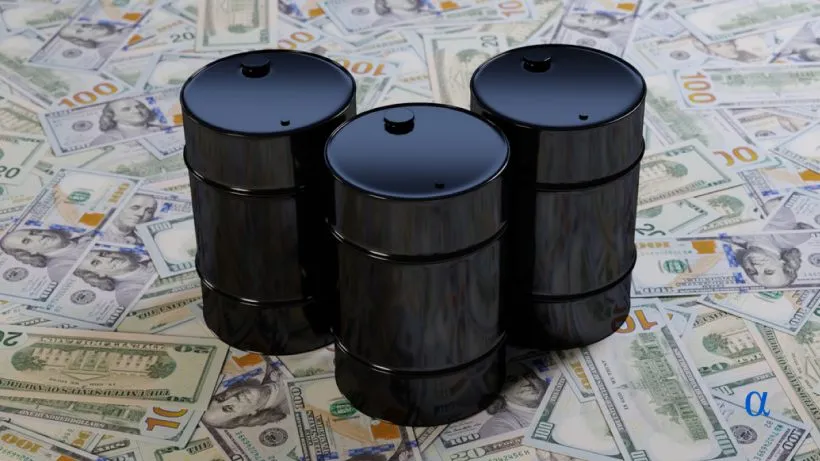
Crude Reality: OPEC Meetings May Not Be The Volatility Catalyst Investors Expect
| Table 1: WTI, Daily Returns, Pre and Post-OPEC Meetings (2005 - Current) | |||||||||
|---|---|---|---|---|---|---|---|---|---|
| Pre-Meeting | Post-Meeting | ||||||||
| Trading Days | 10 | 5 | 2 | 1 | 1 | 2 | 5 | 10 | |
| Return | 1.18% | 0.06% | 0.33% | 0.50% | -0.48% | -0.28% | -0.31% | -0.31% | |
| Max | 25.42% | 11.53% | 6.04% | 9.32% | 4.80% | 6.25% | 12.42% | 12.25% | |
| Min | -17.58% | -15.20% | -6.13% | -5.41% | -10.21% | -9.48% | -25.87% | -49.53% | |
Source: OptionMetrics
Average pre-meeting returns are generally higher than average daily rolling returns since 2005:
| Table 2: WTI Rolling Daily Returns, 01/03/2005 -10/10/2025 | ||||
|---|---|---|---|---|
| Period (Days) | 10 | 5 | 2 | 1 |
| Return | 0.320% | 0.144% | 0.076% | 0.039% |
| Max | 82.07% | 56.69% | 44.29% | 24.42% |
| Min | -54.82% | -52.35% | -51.16% | -41.81% |
Source: OptionMetrics
Surprisingly, implied volatility declines on average during the meetings, albeit minorly (Table 3).
Average changes in implied volatility were, on average, relatively small, but larger than changes incurred during“normal” periods (Table 4, below). However, the range of change in implied volatility can be significant, as revealed by the Min and Max values shown below, and indicate the potential for volatility trading pre- and post OPEC meetings:
| Table 3: WTI, Daily Imp. Vol Change (% Points), Pre- and Post-OPEC Meetings (2005 - Current) | ||||||||
|---|---|---|---|---|---|---|---|---|
| Pre-Meeting | Post-Meeting | |||||||
| Period (Days) | 10 | 5 | 2 | 1 | 1 | 2 | 5 | 10 |
| Change | -0.86% | -0.41% | -1.11% | -1.98% | -0.14% | -0.33% | 0.19% | -0.48% |
| Max | 19.77% | 19.02% | 5.56% | 18.12% | 4.56% | 10.01% | 66.09% | 97.51% |
| Min | -29.89% | -22.34% | -12.25% | -14.65% | -8.02% | -7.95% | -10.36% | -28.62% |
Source: OptionMetrics
Crude oil can be extremely volatile, but the most extreme changes in implied volatility (e.g., March and April, 2020) did not occur in the period adjacent to OPEC meetings, as can be seen by the higher range of change in implied volatility for the entire period (max/min, Table 4) vs. the range before and after OPEC meetings (max/min, Table 3):
| Table 4: WTI, Rolling Daily Imp. Vol Change (% Points), 01/03/2005 -10/10/2025 | ||||
|---|---|---|---|---|
| Period (Days) | 10 | 5 | 2 | 1 |
| Change | -0.024% | -0.012% | -0.006% | -0.003% |
| Max | 109.58% | 92.01% | 57.22% | 61.78% |
| Min | -101.17% | -86.22% | -57.27% | -30.83% |
Source: OptionMetrics
Interestingly, the most extreme movements in price and implied volatility (Table 4) have not occurred before or after OPEC meetings. In some cases, the OPEC meeting was in reaction to already established market trends, but was not the cause. For example, the OPEC meeting in April 2020, the most volatile period in the history of exchange traded crude oil, was in reaction to the extremely negative price action that occurred during the previous month. Apparently, OPEC does not have a monopoly on producing crude oil volatility.

Legal Disclaimer:
MENAFN provides the
information “as is” without warranty of any kind. We do not accept
any responsibility or liability for the accuracy, content, images,
videos, licenses, completeness, legality, or reliability of the information
contained in this article. If you have any complaints or copyright
issues related to this article, kindly contact the provider above.


















Comments
No comment